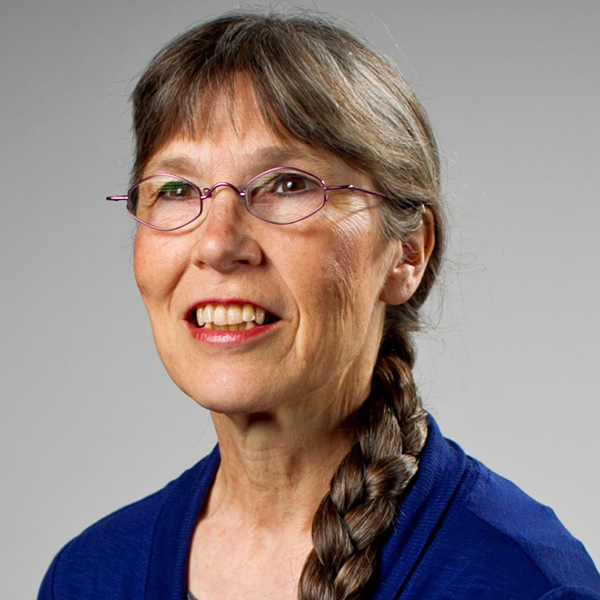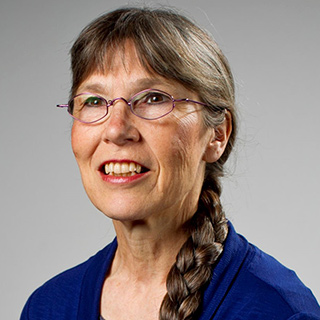
The educational models that Vandiver created as a teacher have helped her translate environmental health science to a number of communities and age groups. (Photo courtesy of Kathy Vandiver)
Prior to joining the Massachusetts Institute of Technology (MIT) in 2005 as a community engagement and education specialist, Kathleen Vandiver, Ph.D., taught middle school science for 16 years. During that time in the classroom, she relished devising experiments and hands-on activities to help her students recognize and experience key scientific concepts.
Vandiver’s work illustrates the value of developing teaching tools that can accommodate learners at different educational levels — a practice known as universal design. For example, DNA models she created are marked with large arrows and chemistry symbols to help students remember how the molecule assembles.
“Middle school is when most kids decide what subjects they like,” said Vandiver. “Engaging them with materials in a way that is most beneficial for their learning also helps foster an interest in science. I later realized I could reach out to the public with a similar approach from MIT.”
Vandiver has since dedicated her career to teaching environmental health concepts to students, Tribal populations, health professionals, and communities affected by environmental contamination.
Reporting Back on the Malden River
Years ago, as Director of Community Outreach and Education at MIT’s Center for Environmental Health Sciences, which receives funding through the NIEHS Core Centers program, Vandiver saw a public health need in Malden, Massachusetts, a city north of Boston.
“Public officials in Malden were worried about the Malden River, and with good reason,” she said. “Throughout the 20th century, industries such as rubber, iron, and munitions manufacturers dumped their wastes — with the potential for producing serious health effects — into the river. In particular, parents of Malden’s high school rowing team were very concerned about the youth who practiced daily on this river.”
Vandiver recognized that a human health risk study was necessary before the river could be considered a safe place for boating. She put together a team, including an expert from an environmental firm, a local watershed association, and an MIT toxicologist, to gather data.
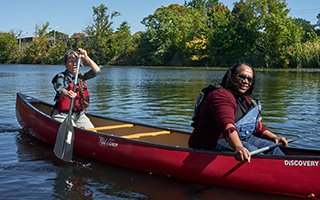
The team collected sediment samples from boat launch locations, analyzed their contaminant levels, and calculated the health risks faced by boaters who might have contact with the water and sediments. Fortunately, they found a negligible risk of cancer for recreational boating.
“In the absence of a rigorous health risk analysis, ‘stay away from the water’ has been the logical precautionary advice given to the public in prior years,” Vandiver said. “Now, we explained that just because a toxicant is present does not necessarily mean community members are at risk of health effects.”
According to Vandiver, the study results supported the Malden River as a public amenity. Subsequently, the mayor and city councilors endorsed a proposal for a public park project led by Vandiver, called Malden River Works, which won a Leventhal Cities Prize for innovative urban design.
After several years of community participation and engagement, the park plan is now in place, including environmental restorations, pathways along the river, and a boathouse with a dock for public boating. Construction will begin in 2024.
Guiding Community Cleanup
Vandiver’s MIT work also includes leading community engagement efforts for the NIEHS-funded MIT Superfund Research Program. In that role, she is involved with the Wilmington, Massachusetts, community to address concerns related to exposure to N-nitrosodimethylamine (NDMA), a potentially cancer-causing chemical. Ineffective containment of millions of gallons of hazardous waste at the Olin Chemical Superfund site has led to NDMA contamination in Wilmington groundwater.
In collaboration with the University of Cincinnati and the University of Pennsylvania, Vandiver led MIT’s efforts to create Lessons Learned on the Road to Environmental Cleanup, an online resource with educational and interactive modules, short videos, and questions for reflection to help participants address chemical exposures in their communities.
To create this online resource, Vandiver conducted interviews with Wilmington residents, guiding them to share words of advice about their experiences dealing with chemical exposures. For example, to form an effective community organization, residents suggested electing a board, identifying core values, and creating simple bylaws and goals. They also explained how community organizations can apply for financial support to hire technical professionals to assist in gathering additional data.
“Our hope is that the modules will help new groups learn how to navigate environmental cleanups,” Vandiver said. “The tool is unique because it supports not only community members but also provides useful information for all individuals who are involved in cleanups, including government officials, workers on the job, and company representatives.”
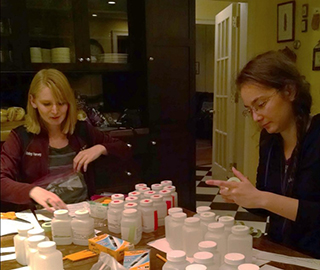
Abby Harvey (left) and Tchelet Segev (right) — MIT graduate students mentored by Vandiver — tested water samples for metals in this citizen scientist project with the Passamaquoddy Tribe. (Photo courtesy of Kathy Vandiver)
Partnering With the Passamaquoddy
Over the years, the Center for Environmental Health Sciences and the MIT Superfund Research Program have partnered with the Passamaquoddy Tribe in Maine to address their environmental health concerns related to heavy metals in drinking water.
Vandiver prioritizes ongoing engagement with Tribal colleagues, which starts before any research study is proposed and continues with regular visits over the long term. In one participatory science project, she partnered with the Tribe’s Environmental Department to assess water quality in Passamaquoddy households and create individualized reports. Aggregated responses were presented at community meetings, along with a sample report to show how to interpret the numbers.
“Community members were actively involved in the sample collection and research process, which helped them learn about safe contamination levels and potential health effects,” Vandiver said.
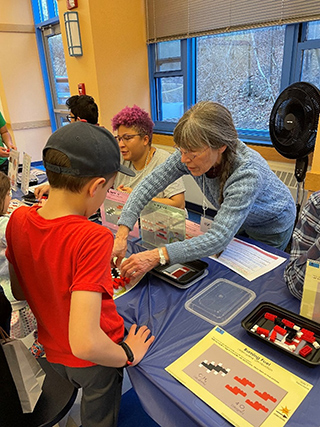
She continues to work with the Tribal Environmental Department and MIT researchers to collect samples and help protect the community.
Modeling Air Molecules
Ever the teacher, Vandiver also continues nurturing the next generation of scientists.
For example, Vandiver designed custom LEGO brick sets to introduce children to the molecules found in air pollution. These hands-on tools make difficult concepts tangible, allowing kids to manipulate the bricks as if they were atoms.
Vandiver’s peers have long taken note of her dedication to educating children. In 2011, she was inducted into the Massachusetts Hall of Fame for Science Educators for her efforts to make abstract concepts clear to teachers, students, and community members alike.
Vandiver hopes to introduce more environmental health education tools into as many classrooms as possible, and to provide teachers with online support for their use.
“Teachers might teach thousands of students throughout their careers, creating a huge multiplier effect to improve environmental health literacy,” she said.
Kathleen Vandiver